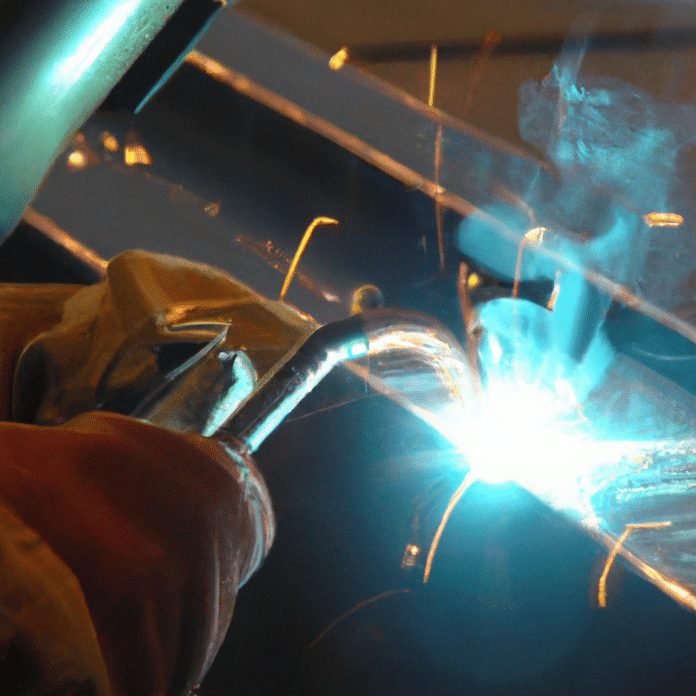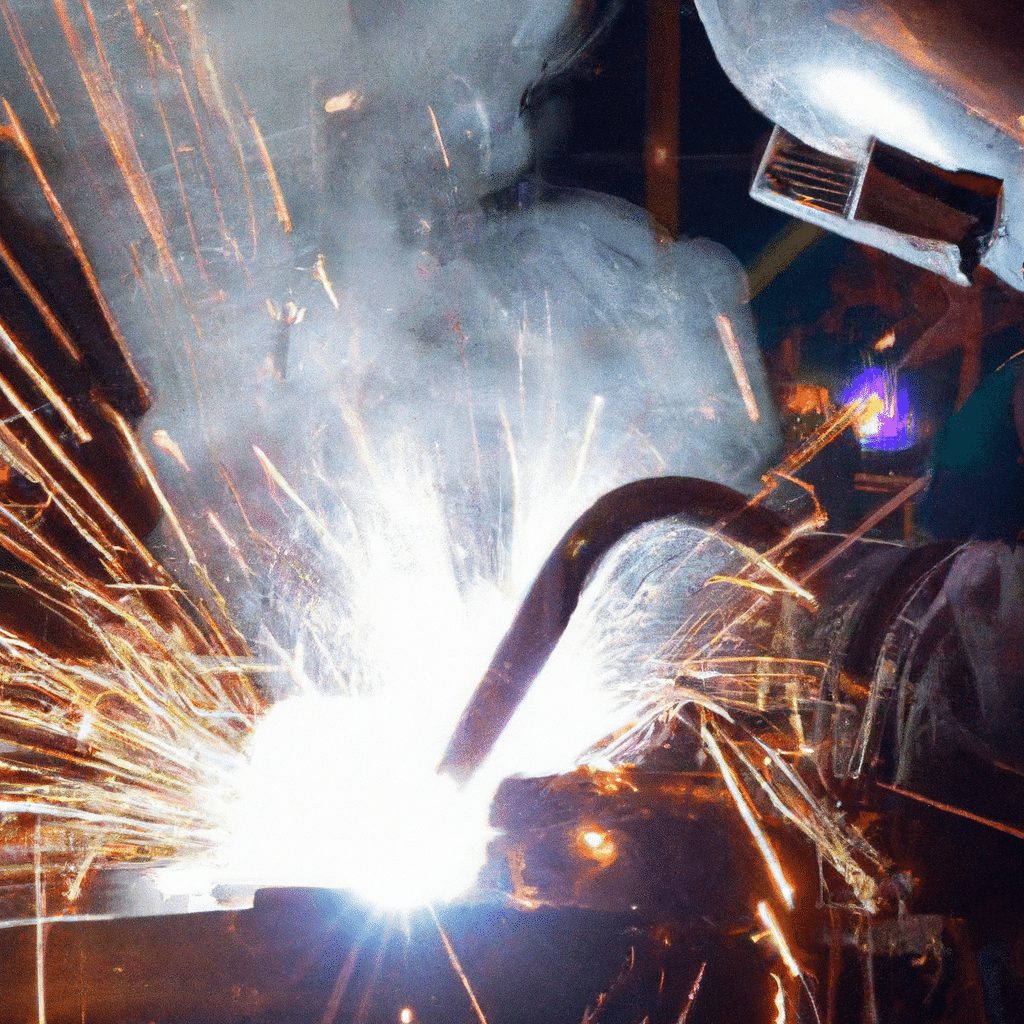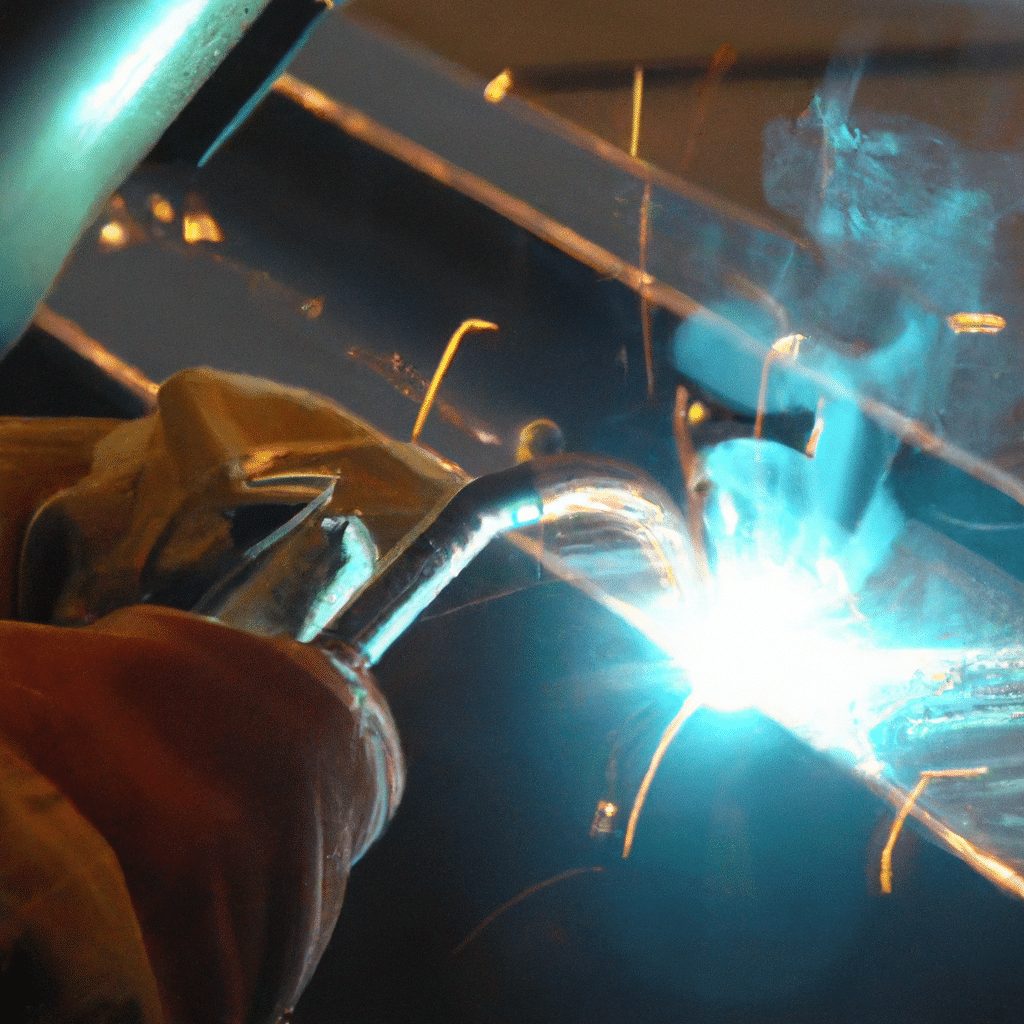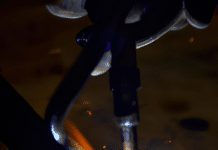In the world of welding, the importance of selecting the right welding joint for a project cannot be overstated. It’s like finding the perfect puzzle piece to complete a masterpiece, as the right joint ensures strength, durability, and structural integrity. From butt joints to lap joints, each welding joint has its own unique characteristics and advantages, which can greatly impact the success of a welding project. In this article, we will explore the key factors to consider when choosing the right welding joint, as well as some common types of joints and their applications. So, get ready to join us on this journey of discovering the art and science behind choosing the perfect welding joint for your next project.
Review contents
Consider the Type of Materials
When choosing the right welding joint for a project, one of the first considerations is the type of materials that will be joined together. It is important to understand the properties and characteristics of each material to ensure a strong and durable weld.
Matching Material Types
Matching material types refers to joining similar metals together. This is typically the easiest type of welding joint to achieve because the materials have similar properties, melting points, and thermal expansions. Examples of matching material types include welding two pieces of stainless steel or two pieces of aluminum.
Similar Material Types
Similar material types involve joining metals that have similar properties but may have slight differences in composition or alloying elements. While the materials are not identical, they can still be effectively welded together with the right techniques. Examples of similar material types include joining carbon steel and low alloy steel or welding two different grades of stainless steel.
Different Material Types
Different material types involve joining metals that have significantly different properties. This can present challenges during the welding process due to differences in melting points, thermal expansions, and chemical compositions. Examples of different material types include joining steel and aluminum or welding stainless steel to copper. Special welding techniques and considerations are required to ensure a strong and durable joint in these cases.
Assess Project Requirements
Once the type of materials has been identified, it is important to assess the specific requirements of the project. This involves considering factors such as strength and load requirements, aesthetic considerations, environmental conditions, and budget and time constraints.
Strength and Load Requirements
The strength and load requirements of the project will determine the type of welding joint that is suitable. For projects that will undergo heavy loads or stress, stronger welding joints such as groove welds or plug welds may be required. On the other hand, projects with lighter loads may only require fillet welds for sufficient strength.
Aesthetic Considerations
In some projects, not only is the functionality important, but the appearance of the weld is also a consideration. Certain welding joints may be more suitable for achieving a clean and aesthetically pleasing finish, such as butt joints or corner joints. These joints allow for a smooth and seamless appearance when properly executed.
Environmental Conditions
The environment in which the project will be located also plays a role in choosing the right welding joint. Different welding joints have varying degrees of resistance to corrosion and other environmental factors. For example, in outdoor projects exposed to harsh weather conditions or high levels of moisture, welds with good corrosion resistance, such as T-joints or lap joints, may be preferred.
Budget and Time Constraints
Budget and time constraints are important factors in any project. Some welding techniques require more time and skilled labor, which can increase project costs. On the other hand, certain welding joints may require specialized equipment, which can also add to the overall project expenses. It is important to evaluate the available budget and time frame to determine the most appropriate welding joint that balances cost and efficiency.
Evaluate Joint Strength and Integrity
Before proceeding with the welding process, it is crucial to evaluate the strength and integrity of the joint. Different joint designs offer varying levels of strength and stability, and it is important to choose the right joint for the specific project requirements.
Butt Joint
A butt joint is one of the simplest and most common types of welding joints. It involves joining two pieces of material that are aligned in the same plane. While butt joints are relatively easy to execute, they may not provide the highest level of strength and integrity. They are commonly used for projects with moderate load requirements or in situations where access to the joint is limited.
Corner Joint
A corner joint is formed when two pieces of material are joined at a right angle, creating a corner. This type of joint provides better strength and stability compared to a butt joint. It is commonly used in structural applications and projects that require higher load-bearing capabilities. Corner joints can be found in various industries, including construction, automotive, and manufacturing.
Tee Joint
A tee joint is formed when one piece of material is joined to the surface of another piece at a right angle, resembling the letter “T.” This type of joint is commonly used in applications where strength and stability are critical, such as in the construction of frameworks or supporting structures. Tee joints can be found in a wide range of projects, including bridges, buildings, and industrial machinery.
Lap Joint
A lap joint is formed when two overlapping pieces of material are joined together. This type of joint provides increased strength and stability compared to butt joints and is commonly used in projects that require high load-bearing capabilities. Lap joints are widely used in industries such as automotive, aerospace, and shipbuilding, where the integrity of the joint is crucial for safety and performance.
Edge Joint
An edge joint is formed when two pieces of material are joined along their edges. This type of joint provides good strength and stability, especially when properly executed and reinforced. Edge joints are commonly used in projects where a strong and durable connection is required, such as in the fabrication of cabinets, furniture frames, and metal structures.
Consider Joint Accessibility and Positioning
When choosing the right welding joint, it is also important to consider the accessibility and positioning of the joint. The location and orientation of the joint can significantly impact the welding process and the quality of the resulting weld.
Flat Position
The flat position refers to a joint that is welded in a horizontal orientation, with the weld facing upward. This is the most common and easiest position to weld since gravity helps to hold the molten metal in place. Flat position welding is commonly used in applications where the joint can be easily accessed and maneuvered, such as flat surfaces or horizontal structures.
Horizontal Position
The horizontal position refers to a joint that is welded in a horizontal orientation, but the weld is deposited either upward or downward. This position can be more challenging than the flat position since the molten metal is more likely to sag or drip. Horizontal position welding is commonly used in projects where the joint is located on an incline or where access from above or below is limited.
Vertical Position
The vertical position refers to a joint that is welded in a vertical orientation, with the weld faced either upward or downward. This position requires more skill and control since the molten metal can easily flow downwards. Vertical position welding is commonly used in projects where the joint is oriented vertically or where access to the joint is limited.
Overhead Position
The overhead position refers to a joint that is welded in an overhead orientation, with the weld facing downward. This is the most challenging position to weld since gravity is working against the welder, causing the molten metal to drip or sag. Overhead position welding is commonly used in projects where the joint is located on the underside of a structure or where access is limited to the top side.
Determine Welding Method
Once the joint design and position have been determined, it is important to select the appropriate welding method for the project. There are several welding processes available, each with its own advantages, limitations, and suitability for different types of materials and joints.
Shielded Metal Arc Welding (SMAW)
Shielded Metal Arc Welding, also known as stick welding, is one of the most widely used welding processes. It involves the use of a consumable electrode coated with flux, which provides protection to the molten weld pool. SMAW is a versatile process that can be performed in various positions and is suitable for a wide range of materials, including carbon steel, stainless steel, and cast iron. It is commonly used in construction, maintenance, and repair applications.
Gas Metal Arc Welding (GMAW)
Gas Metal Arc Welding, also known as MIG welding, is a semi-automatic welding process that utilizes a continuous solid wire electrode and an externally supplied shielding gas. GMAW is known for its high deposition rates, excellent control, and versatility. It is commonly used in automotive, manufacturing, and fabrication industries for welding carbon steel, stainless steel, aluminum, and other non-ferrous materials.
Flux-Cored Arc Welding (FCAW)
Flux-Cored Arc Welding is a variation of MIG welding that uses a tubular wire electrode filled with flux instead of a solid wire. The flux provides shielding and produces a slag that helps protect the weld during solidification. FCAW is known for its high welding speeds, deep penetration, and suitability for outdoor applications where wind and draft may affect the shielding gas. It is commonly used in construction, shipbuilding, and heavy fabrication industries.
Gas Tungsten Arc Welding (GTAW)
Gas Tungsten Arc Welding, also known as TIG welding, is a precise and versatile welding process that uses a non-consumable tungsten electrode and a separate filler metal, if needed. GTAW produces high-quality welds with excellent control and minimal heat distortion. It is commonly used for welding thin sections or materials that require high-quality welds, such as stainless steel, aluminum, magnesium, and copper alloys. GTAW is widely used in industries such as aerospace, electronics, and specialty fabrication.
Submerged Arc Welding (SAW)
Submerged Arc Welding is an automatic welding process that utilizes a continuously fed consumable electrode and a granular flux that covers the welding arc. The flux shields the molten weld pool from atmospheric contamination, reducing welding defects and producing high-quality welds. SAW is known for its high deposition rates, deep penetration capabilities, and suitability for large-scale welding applications. It is commonly used in the fabrication of heavy structures, pressure vessels, and pipelines.
Consider Joint Preparation
Before starting the welding process, it is important to properly prepare the joint to ensure a strong and durable weld. Joint preparation involves several steps, including joint design, material cleaning, fit-up, and beveling.
Joint Design
The joint design refers to the shape and dimensions of the joint, which can significantly impact the strength and integrity of the weld. Proper joint design is essential to ensure sufficient strength and avoid welding defects. It involves considerations such as joint type, groove angle, root opening, and the use of backing bars or plates. The joint design should be selected based on the project requirements and the properties of the materials being joined.
Material Cleaning
Material cleaning is an important step in joint preparation as it helps remove any contaminants that could affect the quality of the weld. The surfaces to be welded must be free from dirt, rust, oil, paint, or any other foreign substances that can impair the bonding of the weld. Cleaning methods can include mechanical cleaning, such as wire brushing or grinding, as well as chemical cleaning using solvents or degreasers. Proper material cleaning ensures good weld penetration and reduces the likelihood of defects.
Fit-up
Fit-up refers to the alignment and positioning of the joint parts before welding. Proper fit-up is crucial to ensure the correct fusion of the materials and achieve a strong and durable weld. It involves ensuring that the joint edges are properly aligned, gaps are within the acceptable tolerance, and the joint surfaces have sufficient contact for effective heat transfer. Fit-up can be achieved through proper clamping, tack welding, or the use of temporary fixtures.
Beveling
Beveling involves the removal of material from the joint edges to create a V-groove, U-groove, or other specified groove shape. Beveling is typically done to increase the weld joint penetration and ensure a stronger bond. The size and angle of the bevel depend on the thickness and type of materials being joined, as well as the welding process being used. Beveling can be achieved using various tools, such as grinders, milling machines, or specialized beveling machines.
Evaluate Joint Strength and Durability
To ensure the longevity and performance of the welded joint, it is important to evaluate its strength and durability. Different factors can affect the strength and durability of a weld, including tensile strength, fatigue strength, impact strength, and corrosion resistance.
Tensile Strength
Tensile strength refers to the amount of force a weld joint can withstand before breaking under tension. It is an important measure of the joint’s ability to resist pulling or stretching forces. The tensile strength of a weld is influenced by various factors, including the welding process, joint design, material properties, and the quality of the weld itself. Proper welding techniques and quality control measures should be implemented to achieve the desired tensile strength.
Fatigue Strength
Fatigue strength is the ability of a weld joint to withstand repeated load cycles without failure. In many applications, the welded joint may be subjected to cyclic loading, which can cause fatigue and ultimately lead to weld failure. Proper joint design, weld quality, and material selection are essential to achieve good fatigue strength. Considerations such as minimizing stress concentrations, implementing smooth transitions, and ensuring sufficient weld reinforcement can help improve the fatigue life of the joint.
Impact Strength
Impact strength refers to the ability of a weld joint to withstand sudden impact or shock loads. Welded joints in certain applications, such as structural components or machinery parts, may be subjected to impact forces during operation or in case of accidents. The impact strength of a weld depends on various factors, including joint design, welding process, material properties, and the quality of the weld itself. Specialized testing methods, such as Charpy or Izod impact testing, can be used to assess the impact strength of a weld.
Corrosion Resistance
Corrosion resistance is a critical consideration, especially for projects that will be exposed to harsh environments or corrosive substances. While the base materials may have their own inherent resistance to corrosion, the welded joint can be vulnerable to corrosion if proper precautions are not taken. Factors such as the choice of filler material, welding process, and post-weld heat treatment can impact the corrosion resistance of the joint. It is important to select appropriate materials and welding techniques that offer good resistance to environmental or chemical corrosion.
Assess Welding Complexity and Skill Level
Another important aspect to consider when choosing the right welding joint is the complexity of the joint and the skill level required to execute it effectively. Different welding joints have varying levels of complexity, and it is essential to select a joint that matches the skills and experience of the welder.
Fillet Weld
A fillet weld is one of the simplest types of welding joints. It involves joining two pieces of material that are perpendicular or at an angle to each other, forming a triangular fillet. Fillet welds are commonly used in projects that require good strength and load-bearing capabilities. They are relatively easy to execute and are suitable for welders with basic skills and experience.
Groove Weld
A groove weld is a more complex joint that involves joining two pieces of material along their edges, with a groove or channel in between. Groove welds provide a high level of strength and durability and are commonly used in structural applications. However, they require more advanced welding techniques, including precise fit-up, proper joint preparation, and effective control of heat input. Groove welding requires welders with intermediate to advanced skills and experience.
Plug Weld
A plug weld is a type of joint that involves joining two overlapping pieces of material by filling a hole or slot in one of the materials with welding material. Plug welds are often used to secure plates or components together, providing a strong and concealed connection. They require good control and precision to achieve proper alignment and full penetration. Plug welding is suitable for welders with intermediate skills and experience.
Slot Weld
A slot weld is similar to a plug weld but involves filling a slot or groove in one of the materials with welding material. Slot welds are commonly used in projects that require joining plates or components with a flush and aesthetically pleasing finish. They require good control and precision to achieve full penetration and proper alignment. Slot welding is suitable for welders with intermediate skills and experience.
Consider Welding Process Efficiency
Efficiency is an important consideration when choosing the right welding joint for a project. Different welding processes offer varying levels of efficiency in terms of material usage, speed and productivity, automation potential, and post-welding processes.
Efficiency in Material Usage
Efficiency in material usage refers to the ability to minimize waste and optimize the use of welding consumables, such as filler metals, shielding gases, or fluxes. Certain welding joints may require more material due to joint design requirements or specific welding techniques. Minimizing material waste can help reduce costs and improve overall project efficiency.
Speed and Productivity
Speed and productivity are important factors, especially in large-scale or time-sensitive projects. Certain welding processes, such as high-deposition rate processes like FCAW or SAW, offer faster welding speeds, allowing for higher productivity and shorter project durations. However, it is essential to balance speed with weld quality and integrity to ensure that the joint meets the required standards.
Automation Potential
Automation potential refers to the ability to automate the welding process using specialized equipment or robotic systems. Automation can improve efficiency, consistency, and repeatability, minimizing human error and reducing labor costs. Certain welding joints may lend themselves more easily to automation due to their joint design or accessibility. Considering the automation potential can help streamline the welding process and increase overall project efficiency.
Post-Welding Processes
Post-welding processes refer to any additional treatments or operations that may be required after the welding process to ensure the integrity and quality of the joint. These can include processes such as heat treatment, stress relieving, surface cleaning, or inspection and testing. The choice of welding joint may influence the type and extent of post-welding processes required, potentially impacting the overall project timeline and cost.
Evaluate Safety and Health Considerations
When choosing the right welding joint, it is important to prioritize safety and health considerations. Welding can involve hazards such as fume emission, electrical hazards, noise exposure, and the need for protective equipment.
Fume Emission and Ventilation
Welding generates fumes, gases, and particulates that can be hazardous to health if inhaled. It is important to assess the potential fume emission of the welding process and select a joint that minimizes fume generation or requires the use of effective ventilation systems to control exposure. Proper ventilation, such as local exhaust systems or personal protective equipment like respirators, should be considered to ensure a safe working environment.
Electrical Hazards
Welding involves the use of electricity, posing potential electrical hazards to the welder and surrounding personnel. It is important to ensure proper grounding and electrical safety measures are in place. The chosen welding joint should not increase the risk of electrical shock or other electrical hazards during the welding process. Welders should be trained in electrical safety and use appropriate protective equipment to mitigate any potential risks.
Protective Equipment
Welding requires the use of various personal protective equipment (PPE) to protect the welder from potential hazards. This can include safety glasses, welding helmets, gloves, protective clothing, and respiratory protection. The selection of the right welding joint should consider the need for specific PPE based on the welding process, materials, and potential hazards associated with the joint. It is essential to ensure that all personnel involved in the welding process are adequately trained in the proper use of PPE.
Noise Exposure
Welding produces high levels of noise, which can be harmful to hearing if proper precautions are not taken. Noise levels generated during the welding process can exceed recommended exposure limits, requiring the use of hearing protection for the welder and other personnel in the vicinity. The choice of welding joint should not significantly increase noise exposure levels or require additional measures to control noise.
In conclusion, choosing the right welding joint for a project requires careful consideration of various factors. From the type of materials and project requirements to joint strength and integrity, accessibility and positioning, welding method, joint preparation, strength and durability, welding complexity, process efficiency, and safety and health considerations, each aspect plays a crucial role in determining the most suitable joint. By taking into account these factors, welders can ensure the success of their welding projects, producing strong, durable, and high-quality welds that meet the specific needs of the application.





























